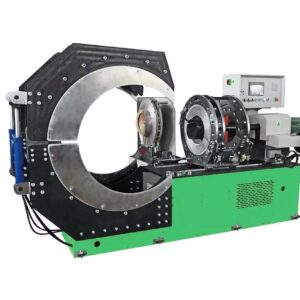In the modern age of digital modeling and immersive technology, 3D photogrammetry has emerged as a revolutionary tool. By turning ordinary photographs into detailed, measurable 3D models, this technique has found applications in industries ranging from architecture and archaeology to gaming and virtual reality. Whether you’re a designer, researcher, or entrepreneur, understanding how 3D photogrammetry works—and how to get the most out of it—can unlock major opportunities.
In this guide, we explore the ins and outs of 3D photogrammetry: how it works, its key benefits, and why so many are turning to 3D photogrammetry services India to bring their digital modeling projects to life.
What is 3D Photogrammetry?
3D photogrammetry is a method of creating digital 3D models by capturing multiple overlapping photos of an object, structure, or environment from different angles. These images are then processed using specialized software that maps out points and surfaces, reconstructing a detailed three-dimensional representation.
Unlike manual 3D modeling, photogrammetry relies on photographic data to ensure accuracy, texture, and depth. This makes it a cost-effective and scalable solution for industries that require real-world object replication.
How Does 3D Photogrammetry Work?
Here’s a simplified breakdown of the photogrammetry process:
1. Image Capture
The first and most important step is to photograph the subject from all relevant angles. Typically, you’ll need:
-
A DSLR or high-resolution camera (a smartphone works for simple tasks)
-
Uniform lighting to avoid shadows
-
360° coverage with significant image overlap
For large-scale environments, drones are often used to capture aerial imagery. This step is critical—poor quality images or insufficient angles will compromise the final model.
2. Photo Alignment and Point Cloud Generation
Once the photos are captured, photogrammetry software aligns the images based on overlapping features and calculates the spatial relationship between them. It uses a technique called triangulation to generate a “point cloud”—a set of data points that represent the geometry of the subject.
3. 3D Mesh Construction
The software then uses the point cloud to build a 3D mesh. This mesh consists of thousands (or millions) of polygons that define the shape and structure of the object.
4. Texture Mapping
To give the mesh a realistic appearance, the software maps the original photographs as surface textures. This adds depth, color, and surface detail, creating a highly realistic digital replica.
5. Export and Application
The final model can be exported in formats such as OBJ, STL, or FBX and used in various applications—from 3D printing to AR/VR environments.
Key Benefits of 3D Photogrammetry
✅ Accuracy and Detail
Photogrammetry produces highly detailed and accurate models that reflect real-world measurements, making it ideal for scientific research, architecture, and cultural preservation.
✅ Cost-Effective
Compared to laser scanning or manual modeling, photogrammetry is more affordable, especially when you partner with professional photogrammetry services in India.
✅ Scalable
Whether you’re capturing a small artifact or an entire city block, 3D photogrammetry can scale to suit your needs.
✅ Time-Saving
Thanks to automation, what used to take days or weeks in manual modeling can now be done in hours, depending on complexity.
Common Applications of 3D Photogrammetry
Photogrammetry is used across a diverse set of industries:
🏛️ Heritage Preservation
Museums and archaeologists use 3D photogrammetry to digitally archive monuments and artifacts.
🏗️ Architecture & Construction
Architects use photogrammetry to survey land, document as-built structures, and plan renovations with high accuracy.
🎮 Gaming & Virtual Reality
3D photogrammetry allows developers to import lifelike models into virtual worlds, enhancing realism and immersion.
📦 Product Design
Designers use photogrammetry to replicate prototypes, iterate quickly, and test fit and form.
🚨 Forensics
Law enforcement agencies use photogrammetry to document crime scenes and analyze spatial relationships.
Why Choose 3D Photogrammetry Services in India?
As global demand grows, photogrammetry service providers India are becoming go-to partners for affordable, scalable, and precise modeling services.
Here’s why:
1. Skilled Professionals
India is home to a large pool of highly trained engineers and digital artists who specialize in photogrammetry and 3D modeling. You can hire 3D photogrammetry India teams that are fluent in international standards, platforms, and file formats.
2. Cost-Effective Solutions
Labor and overhead costs in India are significantly lower than in Western countries. This allows Indian firms to offer professional photogrammetry services at highly competitive rates—without compromising on quality.
3. Advanced Infrastructure
Top-tier Indian providers invest in the latest cameras, drones, and processing software. Many also have high-performance computing systems to handle large data sets and deliver faster turnarounds.
4. Flexible Engagement Models
Whether you need a one-time project or ongoing services, 3D photogrammetry services India can scale to meet your specific requirements.
Tools Used in Photogrammetry
Here are some leading tools used by both beginners and professional service providers:
-
Agisoft Metashape: Robust, versatile, and perfect for both small objects and aerial mapping.
-
RealityCapture: Known for fast processing and precision.
-
Pix4D: Ideal for drone photogrammetry and mapping.
-
Meshroom (AliceVision): Free and open-source for beginners.
-
Autodesk ReCap: Seamless integration with other Autodesk tools.
Many 3D modeling photogrammetry India experts use a combination of these tools based on project requirements.
Tips for a Successful 3D Photogrammetry Project
Whether you’re trying it yourself or working with a professional, here are key tips to ensure great results:
-
Ensure Good Lighting: Natural or diffuse lighting is best. Avoid harsh shadows.
-
Maintain Consistent Camera Settings: Use manual mode to lock ISO, aperture, and shutter speed.
-
Avoid Motion Blur: Use a tripod or steady hand to keep shots clear.
-
Take Overlapping Photos: Ensure 60–80% overlap between photos for optimal results.
-
Consider Hiring Professionals: For large or complex projects, hiring 3D photogrammetry India experts can save time and guarantee quality.
When to Hire Professional Photogrammetry Services
DIY photogrammetry is rewarding, but sometimes it’s smarter to work with a professional team. You should consider hiring experts if:
-
The object or area is too large or complex.
-
You need highly detailed, production-grade models.
-
You lack the tools, software, or computing power.
-
Time is of the essence and deadlines are tight.
Working with photogrammetry service providers India gives you access to a team of experts who can manage the entire workflow—from photography and processing to delivery and integration.
Conclusion
3D photogrammetry is no longer a niche skill—it’s becoming an essential capability across creative, technical, and industrial domains. By capturing the real world and transforming it into digital assets, photogrammetry unlocks limitless opportunities for design, analysis, preservation, and innovation.
Whether you’re an individual learning the ropes or a business scaling operations, India has become a global hub for reliable and affordable solutions. If you’re looking to hire 3D photogrammetry India, you’ll benefit from expert talent, advanced technology, and cost-effective pricing.
Ready to explore the world of 3D photogrammetry? Start experimenting with your own images—or better yet, partner with the best 3D photogrammetry services India to turn your ideas into stunning, functional 3D models.
Would


